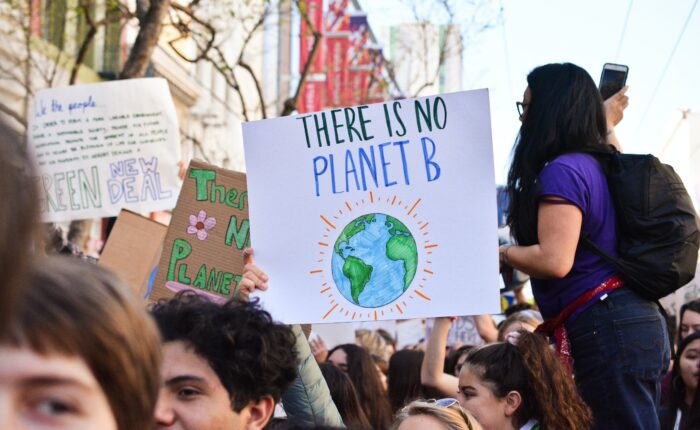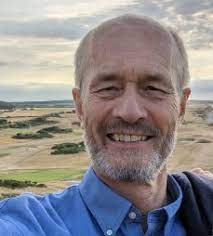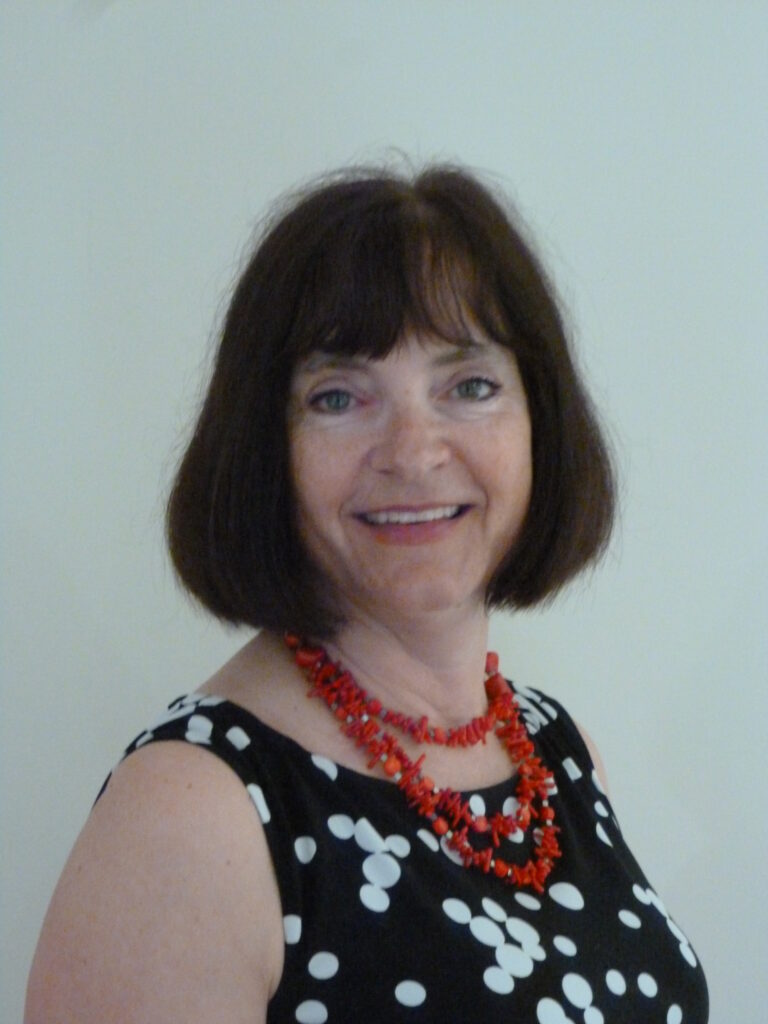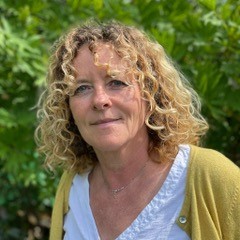Hope as a verb

This month, the northern hemisphere has been setting a cascade of record-breaking high temperatures. We have been hearing news of deadly heatwaves, melting ice caps, floods, landslides, typhoons, superheated oceans and extreme weather events. As this unfolds, we are told that our species is in effect chronicling its own extinction. The climate crisis is truly upon us, and in our client work, not only do we have to deal with what is now commonly termed eco-distress, we have to deal also with our own feelings about the looming climate emergency. Unlike Brexit, republicanism or other divisive political issues, the climate crisis has moved out of the realm of the political, and is now firmly embedded in the personal, affecting us all whether we choose to engage with it or not. Climate change is happening, the fact of it is no longer in dispute. And with that in mind, it is a dynamic that will increasingly come into our therapy rooms. Whether this is entirely appropriate is still open for debate, but client and therapist alike, we are in the same boat, and we share a common humanity.
To find out about different styles of activism, I met and talked with two EMDR therapists who are both climate activists and members of the EMDR UK Association’s Special Interest Group (SIG) on climate. I talked with them about how they came to their activism, what form that activism takes and how we can perhaps learn from both of their experiences.
Many of you will be familiar with Mark Brayne and Patricia Downing. Mark is an ex-BBC journalist who has immersed himself in climate change issues for many years. This has perhaps given him an insider’s head start, and he has not held back publicly about his views, set out as long ago as 2007 in a lead article for BACP’s Therapy Today (Brayne, 2007). Having spent an hour with Mark talking about the climate crisis, it would be fair to say that he comes from the ‘shock and awe’ approach to getting people in touch with the realities of the emergency, and consequently with their capacity for eco-distress. He says “things are far, far worse than politicians, media and ordinary folk dare to admit”.
On the other side is Patricia Downing who has come to climate activism more recently and in a more personal way, working first through her own distress, as she puts it, to enable her to help others. Both would agree that truly encountering (both feeling and knowing) the reality that is facing each one of us sets off a trauma response, characterised by a variety of emotions including shock, despair, disavowal or denial, helplessness and hopelessness. Both would also agree that this can then lead to what we might call posttraumatic growth, and to empowerment and a willingness to do something about the emergency facing us all.
Different approaches do not make one person right and the other person wrong; they are just different approaches. Not doing anything about the climate crisis is also an approach – if you like, a choice. Not doing anything is a choice not to engage, not to help, not to acknowledge, and by default therefore to maintain the status quo. And we know from our work with individuals in therapy, ultimately, avoidance does not work.
In my conversation with Mark, I have to say it did feel a bit like being hit by an avalanche of alarming statistics, as he quoted the likes of Jim Hansen, NASA and James Lovelock. He told me that it is very likely that, as sea level and global temperature rise, with the concomitant collapse of agriculture and so much more, there will be no human civilisation as we currently know it. There will still be pockets of human survival, but in Mark’s understanding of the science, much of the planet’s human population and the rest of the living world will have been destroyed by the consequences of a world that has overheated. Even if we stop all fossil fuel consumption now, give up eating meat and the rest, and with Net Zero halt all greenhouse gas emissions, with more than a trillion tonnes of CO2 already pumped into Earth’s atmosphere since the start of the Industrial Revolution, Mark says Hansen’s research suggests that global temperatures already have 10 degrees of warming baked in, with more than four degrees happening by the end of this century. That is in the lifetime of children being born today.

“In just 300 years, as we’ve dug coal and pumped oil and gas, we humans have burned through 300 million years of stored solar energy. That’s a million years of the sun’s heat and light every year. That can’t continue, and nature’s most basic law is this: that which is not sustainable will not be sustained.”
As I listened to Mark laying out his arguments, I could sense his frustration at having engaged with this story for so long and to so little effect. No wonder perhaps that he advocates a kind and clear but blunt, non-sugar-coated approach to informing people what will happen. He likened the alternative softly-softly approach to that of a doctor withholding a diagnosis of terminal cancer, and we discussed the ethics of disguising the truth to protect people’s feelings – in doing so, ultimately choosing to disempower them.
During our conversation I noticed my own feelings of hope drain away. I had sort-of believed in the COP climate conferences and Paris 2015 and all that, and I trusted that we could avoid the 1.5oC global temperature rise set out then as the maximum level of heating that mankind could afford. But it seems, from what Mark quoted, that that is no longer possible.
As the brutal reality of what Mark was saying settled on me, I noticed that I was shaking inside. I felt shut down, and if truth be known, I felt somewhat belligerent, wanting to challenge it all. I did not want to believe it. This we would of course recognise as a trauma response. Mark noted the paradox: frightened people are disempowered, but people ignorant of the facts are equally powerless. This is where the challenge lies, and as therapists, if we are to help others with similar feelings, we need work through our own emotional responses to the climate emergency, and onward to growth and action. In Mark’s words, “We need to work lovingly with each other and our clients as we openly address the meaning of climate change. In addressing the dangers we now face – as individuals, as families, as communities and as a species – we need to show realism, clarity and courage, but also congruence and compassion”.
Patricia Downing, EMDR Practitioner and Secretary of the Climate SIG, came to climate activism in a way that will be familiar to many of us, reading about it in her youth and developing knowledge since then. In 2018 she read a letter in a newspaper from someone in Extinction Rebellion (XR) and realised that not enough was being done on either the political or the personal level.
This realisation came at a time when, primarily as a mother but also as a citizen of the world, she already felt uncomfortable about how we as humans were engaging with issues of climate and sustainability. Professional development led Patricia to courses in mindfulness, and to spending more time in nature, bringing her a closer sense of connection with the natural world in a way that had eluded her previously. She decided to involve herself with XR meetings and protests, but was clear from the outset that she did not want to get arrested.

During Covid lockdown she became aware of the work of Joanna Macy and ‘The Work That Reconnects’. This is open-source learning that is designed for groups and individuals to “foster the desire and ability to take part in the healing of our world”. It builds on the work of Macy’s book Active Hope (New World Library, 2011.) After participating in an Active Hope book group, she co-facilitated one herself and continues to convene these groups.
This information-gathering exercise has for Patricia been a way of approaching and being with the crisis. It does not stop the helter-skelter of emotions, but she says it has taught her to honour her feelings, leading to a sense of gratitude and the concept of “hope as a verb” – which is activism, a gentler, more personal, perhaps more helpful form of activism than Mark’s doom-warnings. So, for Patricia, when the call came it was a no-brainer to involve herself with the SIG, and to become its secretary.
One of the personal barriers to involvement was that once some things are known, they cannot be unknown, and much of what she was learning led her to feeling quite helpless and depressed. An example of this is the Berliner-Morgenpost interactive map of the world entitled ‘Where Our Earth Becomes Uninhabitable’ (in German on their website, but Google will translate if necessary). In the spirit of not sugar-coating the facts, I recommend a look at this very clever, and, yes, distressing infographic. I can see why Patricia felt angry and frustrated at the lack of action. Patricia says that mindfulness does help her deal with climate overwhelm, and she has participated in a ‘Mindfulness-based Sustainable Transformation’ programme organised by Inner Green Deal, as well as attending ‘climate cafés’ organised by the Climate Psychology Alliance (CPA).
Much as Patricia would like things to be different, she recognises that, no matter how strongly they feel, other people may have their own barriers to becoming active in this area. Time is a challenge; there is the inconvenience, just having the headspace to deal with one more thing and the need to look after oneself – all contribute to inactivity and avoidance. She acknowledges that we need to be mindful about what we expose ourselves to, and that there is a fine line between denial and limiting exposure.
The Climate SIG is there to address such issues as whether we bring this topic up in therapy, and how we deal with it when it does arise. It is a complex area, especially when many client populations feel they have too much to cope with in daily living to worry about the climate.
What happens next is political, but climate-change facts are not. Patricia and Mark are agreed that as therapists we need to know where we stand on the issue of the climate emergency. We need to know what we bring into the room, and to have done work on our own processes so that we can be helpfully present to whatever our clients bring. The SIG is a trusted, open and inclusive space where at least some of this work can be done.
References
Brayne, M. (2007). Therapy today on climate change. https://psychlotherapist.com/therapy-today-on-climate-change/
https://interaktiv.morgenpost.de/klimawandel-hitze-meeresspiegel-wassermangel-stuerme-unbewohnbar/
Inner green deal https://innergreendeal.com/#open-programmes
https://www.climatepsychologyalliance.org/index.php/component/content/article/climate-cafes?catid=13&Itemid=101
Macy, J. https://www.joannamacy.net/work
Macy, J. & Johnstone, C. (2011). Active hope. New World Library. ISBN 9781577319726




